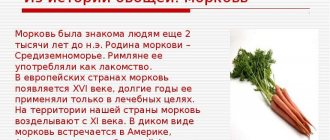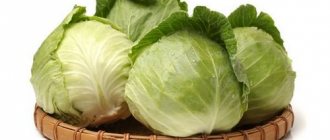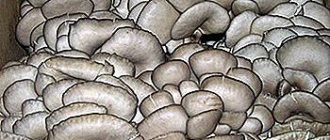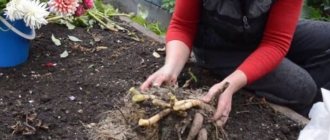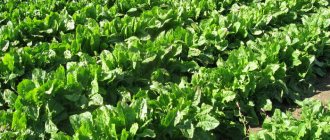Features of the structure of the vegetable
An important point is in what form carrots should be stored. Is this root vegetable fresh? If fresh, will it be frozen? Perhaps the carrots have already been processed into a finished product: boiled, turned into a snack or juice. All this will affect the conditions and shelf life. For long-term storage of fresh carrots, they should be carefully sorted, and root crops with traces of disease , damage, or simply uneven should be separated. Size also matters.
Attention : Carrots that are kept in the refrigerator for a long time should be approximately equal in size, not too big and not too small.
Warnings
It is necessary to comply with the conditions for selecting and preparing carrots:
It is initially necessary to select the optimal root crop for storage by type, size, and condition. Failure to comply with these initial measures may be a harbinger of rapid spoilage of the vegetable.- Mandatory preparation of carrots before sending for storage. To wash, peel or remove dirt from the root vegetable, store it whole or sliced, or grated - everyone chooses for themselves according to convenience and length of storage period. Place in a plastic bag and tie it well, letting out all the air. Store in the bottom vegetable drawer or freezer.
Is it possible to preserve root vegetables in the refrigerator?
Depending on the form in which you plan to store the carrots, you need to correctly determine the place where to place it. A modern refrigerator has locations suitable for different occasions : a compartment for prepared foods, a compartment for fresh raw vegetables and a freezer.
If you don’t mess with the location and comply with additional conditions in relation to the form factor in which the root vegetable is presented, then there will be no obstacles to using the refrigerator. Temperature conditions for storing carrots in the refrigerator:
- in the main compartment at a temperature from +2 to +6 degrees;
- in the “freshness zone” at a temperature from 0 to +3 degrees;
- in the freezer at a temperature of -8 to -23 degrees.
Methods for harvesting crops for the winter
Root vegetable preparations are made in several ways:
- cut - for first and second courses;
- tinder - for subsequent sautéing or salad;
- blanching - a semi-finished product that requires additional preparation;
- sauté with and without onions;
- boiled - stored whole root vegetables or chopped.
The entry of microorganisms into the semi-finished product will quickly cause fermentation of the product, therefore, when chopping, keep your hands and kitchen tools sterile.
Frozen
Frozen carrots are not only an excellent addition to many dishes, but also a source of microelements, vitamins and other useful substances that the body lacks in winter.
The advantages of frozen root vegetables are their availability all year round , regardless of price, and time savings when preparing dinner.
All types of carrots, of any size and condition, are suitable for freezing.
Vegetables are washed, skins are scraped, the green tops are removed, dried naturally and cut into:
- Small cubes - for soups.
- Large cubes - for stews, roasts.
- In strips, cubes, circles - for first courses, goulash.
- Stars, slices, flowers - for decorations, soups.
The cuttings are sorted into ziplock bags, not stuffed tightly.
Distribute evenly throughout the bag, squeeze out the air, and seal. Thawed carrots cannot be re-frozen; this makes them watery and tasteless, so they are packaged in single portions. You can quickly make carrot puree from frozen boiled carrots or cut them into a vinaigrette.
Whole root vegetables are also frozen if they are small in size . Before doing this, be sure to wash and dry them.
Boiled
Boiled carrots are left in their peels, peeled or cut into semi-finished products for dishes, and stored on the top shelf of the refrigerator.
The container cannot be hermetically sealed; there must be access to air ; ideally, it is better to cover it with a damp towel or napkin. The container is hermetically sealed so that the smell from it is not absorbed by other products.
The first sign of spoiled boiled carrots is the appearance of mucus on the peel.
Blanched
Treatment with boiling water or steam kills microbes on the surface of vegetables and helps preserve the taste and color of carrots.
To do this, you will need 2 containers - one with boiling water and one with ice water:
- washed, peeled carrots are immersed in boiling water for 3 minutes;
- Remove vegetables using a colander;
- quickly transfer to a container with cold water for 2-3 minutes.
The cooled root vegetables are removed from the ice water. The tray is covered with a towel, vegetables are laid out in one layer on it, and placed in the freezer for 2.5-3 hours.
Then they take it out, put it in a prepared container and place it in the freezer or on the top shelf of the refrigerator.
Grated
Washed, peeled, dried vegetables are grated on a grater or in a food processor:
- Divide into portions.
- Place into containers.
- Freeze.
- After 1-2 hours, take it out of the freezer, shake it and put it back.
There is another way:
- a path of grated carrots is laid out on the stretch film;
- wrap the track tightly in film, like a sausage;
- they are fixed on the sides with thick threads;
- 2 hours after placing it in the freezer, knead the bag with your hands so that the workpiece does not freeze into a lump.
This method is convenient because you can cut off the required amount from the “carrot sausage” and return the rest to its place.
If grated vegetables are stored on the top shelf of the refrigerator, cover the container with a damp cloth.
In Korean
Korean-style snacks cannot be kept open because they have a specific smell that will fill the entire refrigerator compartment.
The preparation for the Korean salad is stored in the freezer, defrosted on the bottom shelf of the refrigerator, so it is taken out several hours before preparation.
Suitable for storage:
- glass,
- ceramic,
- porcelain dishes with an airtight lid.
How long is the shelf life?
For processed vegetable
If we are talking about a finished product or a preparation, then the duration of preservation at home will depend on the specific case. Let's consider how long freshly squeezed carrot juice, boiled and Korean carrots can be stored.
- "Korean carrot - This is a ready-made dish from an orange root vegetable, which is grated and seasoned to taste, after which it is poured with highly heated vegetable oil. The composition of the gas station usually includes:
- table vinegar;
salt;
- sugar;
- red pepper.
- Boiled carrots are considered a fully cooked product, even if they are intended for some kind of salad. If you keep it in the refrigerator for more than two or three days, then the very appearance will no longer cause appetite. The carrots will become flabby or slimy in appearance and unpleasant. It is no longer worth eating it in this state.
- Freshly squeezed carrot juice is a tasty and healthy drink that is prepared by almost everyone who has a juicer. But it is extremely undesirable to store it: valuable properties are lost. If necessary, you can place the carrot juice in the refrigerator in a closed container for a couple of hours. But it is better to drink it immediately after preparation.
Korean carrots are usually infused for 12-14 hours until ready, after which they can be stored in the refrigerator for no more than two weeks.
For fresh carrots
Speaking of fresh (raw) root vegetables, you can count on the fact that with the right approach to storage, it will remain in the refrigerator for one to several months and at the same time remain a high-quality, tasty food rich in vitamins and microelements.
How to organize storage correctly?
Carrots are one of the vegetable crops that are resistant to cold and are able to retain their beneficial qualities and attractive appearance even with slight frosts.
The duration of storage of the harvested crop depends on several factors:
choosing a variety suitable for long-term storage;
- selection of ripened vegetables;
- preparation of collected root crops;
- air temperature – from 0ºС to +2ºС;
- humidity – 90-95%;
- lack of apples in storage in the immediate vicinity;
- protection from light.
Proper storage also includes minimizing the chance of carrot damage.
How to properly prepare a root vegetable?
The steps before putting carrots into the refrigerator for storage often depend on personal experience and habits . Few people decide to make a sudden experiment if they are planning a long-term harvest of root vegetables, because a mistake can be costly.
The main difference is the almost Hamletian question “to wash or not to wash.” Some believe that washed root vegetables are stored better, others are inclined towards “grimy”.
Do I need to pre-wash?
To wash or not is a controversial issue. In support of carrot washing supporters, a number of advantages of this approach can be cited:
- all mechanical damage or its absence is immediately visible;
- traces of disease and decay are visible;
- parasitic microorganisms are removed;
- easier to sort through during storage.
The disadvantages include the fact that washed carrots are more demanding on storage conditions and undesirable proximity in the refrigerator . It also takes longer to dry before sending it for long-term storage. It's up to you to decide which is best.
Preparing carrots for storage
Have you brought home 2-3 kg of fresh carrots, and now you are wondering how to protect them from spoilage? First answer the question where you bought your vegetables, at the market or in the supermarket. If at the market, then they most likely contain tops and soil residues. In this case, cut off the tops, leaving a 2-3 mm tip, and carefully remove the soil using napkins.
If the carrots are from a supermarket, then they may be in unsealed bags by weight. It is necessary to immediately unpack ripe orange root vegetables and not allow them to “suffocate” in plastic bags. Sort through the fruits, separate out the diseased and spoiled ones, throw them away or put them to use. The rest of the slender, fresh “girls from the earth” will go into long-term storage in the refrigerator.
How to preserve carrots longer?
Regardless of whether you washed the carrots or simply limited yourself to removing excess soil, the primary stage of preparing the root vegetable for storage in the refrigerator is to thoroughly dry it from excess moisture obtained during “bathing” or absorbed by the soil. Carrots that are clean after water can be thoroughly blotted with a towel and thus speed up the process. The washed carrots, ready for the next stage, will be dry to the touch and monochromatic. From an unwashed root crop, small particles of soil will fall off on their own when rubbed.
Washed and cleaned
Whole peeled carrots are rarely placed in the refrigerator for long-term storage . But if they have to, they don’t leave it open, because deprived of its natural “skin,” it quickly weathers and loses moisture.
Tip : A food-grade plastic container or film will extend the shelf life of peeled carrots for up to a month if stored in a special compartment of the refrigerator.
A proven method for short-term (3-4 days) storage of carrots in the main compartment of the refrigerator is to immerse them in water . And if you change the water, you can “cheer up” the carrots for up to a week.
We recommend watching a video about storing carrots in film in the refrigerator:
I'm grating
When placing grated carrots in the main compartment of the refrigerator, you need to take into account that in this form they will weather even faster than simply peeled ones. A container, a glass jar with a lid, or, in extreme cases, just a plastic bag will help.
Without freezing, the shelf life will not be long, so grated carrots should be eaten within 10-12 days.
Without freezing
For long-term storage, carrots should be packaged with great care . Examples of good packaging include vacuum bags and cling film. They will not allow excess moisture to penetrate and preserve the root juices. This is one of the most important conditions for long-term storage. If you are going to use film, then be prepared to work hard: it must tightly cover each carrot.
Sometimes wrapping in paper or a paper bag is used to absorb excess moisture. Such packaging will need to be periodically felt, checking for dampness, and replaced if necessary. If everything is done correctly, you will be able to protect the carrots from rotting and flabby.
Placement also matters. The lower the tier in the refrigerator on which you place freshly packaged carrots, the better . Ideally, this should be a compartment for vegetables. A working refrigerator maintains the optimal temperature and humidity ratio in this area.
- Some housewives use wrappers made from newspapers and other printed matter to regulate humidity. It is strongly not recommended to do this, since printing or printing ink may contain lead, cadmium and other substances that are not very beneficial for the body.
- If the carrots are purchased, then the tops have most likely already been removed. In this case, the place where it was torn off should be completely amputated. In the case when the carrot is your own, it is enough to simply trim the tops to the base.
- When you have a lot of carrots, it is better to trim the tops of the root vegetables quite strongly: by 1-2 centimeters. This will prevent them from germinating in the refrigerator.
So as not to become sluggish and flabby
Even with hermetically sealed carrots, there is still a risk of them softening, flabby and sprouting if the optimal humidity regime is not maintained. For carrots it is 65-75%. No less important is the temperature regime. Temperatures beyond -1 to 8 degrees are incompatible with long-term preservation of fresh carrots . Typically, the fruit and vegetable drawer maintains a range of 0 to 3 degrees. For carrots - just right.
For the whole winter
In addition to the rather troublesome preservation of fresh carrots in the “fresh zone” of the refrigerator, freezing them is practiced. Most often, grated or diced carrots are frozen for the winter. In this form, it can be stored throughout the cold season, although it loses some of its taste and beneficial properties. When placed in the freezer, it should also be packaged: in containers, vacuum packaging or plastic. In this form, carrots are suitable for frying, in vegetable stews and any dishes where the cook’s imagination dictates.
We recommend watching a video about freezing carrots for the winter:
How to properly store carrots in a cellar or basement
Having a cellar or basement is a good perk for storing vegetables. However, if you do not follow the rules, the shelf life of carrots will be short.
Preparing the cellar
Immediately clear the room of debris and dirt. There should be no mold growth on the walls in the intended storage location. In case of high humidity, open everything until completely dry. If mold has formed on the shelves, they need to be cleaned, dried or replaced. For an ideal result, whitewash the walls with quicklime. It will protect vegetables from the appearance of fungus and the accumulation of harmful microorganisms.
In plastic bags
Place the dried carrots in any plastic bag and leave it open. If you have a large quantity of carrots, sort them into plastic containers in the amount of 8–12 pieces. If any vegetable begins to rot, most will be protected from spoilage.
In sand
Place the carrots in layers so they don't touch each other, then cover them with a layer of damp sand. Repeat this procedure with each layer. When the top is completely dry, spray the sand with water on the sides and center.
In pine sawdust
Sawdust prevents the appearance of bacteria, fungus and harmful substances. The process of laying carrots is similar to sand. Place the carrots separately from each other and cover them with pine sawdust, and the height of the layer should not be less than 3 cm.
In the moss
Sphagnum moss has a substance that prevents rotting and fungal growth. If you assemble it yourself, then dry it first. Then package it in bags and use it to prepare carrots for the winter. Moss is used only once, so it needs to be harvested again next year. The substance is also sold in specialized stores in a ready-made state.
In clay
Using clay is not the cleanest method of storage, but the applied mask protects it from harmful substances. The outer shell also protects against rotting. To use, dilute the clay with water until a thick mixture is formed, then immerse vegetables in the solution one by one and lay them out to dry. Once the clay has set, move the carrots into boxes and lower them into the cellar.
In onion or garlic peel
Garlic and onion peels prevent the penetration of microorganisms, prevent the appearance of fungus and prevent carrots from rotting. Place a sufficient amount of husks into storage bags. If it is crushed, the protective effect will increase. Place the root vegetable in the container and shake until it is coated in the husk. After this, lower the bags into the cellar.
In the beds
A unique and challenging way is to leave the carrots in the garden. Do not risk all the fruits; use several beds for the experiment. First, cut off the tops of the sprouted carrots. Then fill the area with sand and cover with plastic. At the end, cover everything with peat or humus. This method is not relevant in winter, but in early spring you can remove enriched carrots. At very low air temperatures, the fruit can freeze, so this method is relevant only in certain regions of Russia.
In enamel pans
Enameled cookware prevents the appearance of rye on metal and the smell of iron. We cut off the tops of the root crop, wash it from dirt and leave it to dry. Then place it in a pan in a vertical position and cover with a napkin or paper.
In plastic boxes
Fungus does not form on plastic and bacteria do not multiply, so its use is one of the simplest and most effective. Use sand, sawdust or moss as filler. In a standard plastic container, no more than 2 layers of carrots are usually placed.
What to do if something goes wrong?
The most unpleasant thing that can happen to carrots in the refrigerator is their spoilage. Rotting, loss of pleasant strength or sprouting of carrots, as a rule, is due to violations of storage conditions. Let’s not talk about possible technical problems with the refrigerator, but rather talk about what depends on its owners.
If carrots are not stored in the freezer, then you should pay attention to the appearance of condensation inside the plastic or plastic packaging. These droplets can indicate the concentration of carbon dioxide inside the container or bag. If condensation is detected, the carrots should be removed, dried and repacked .
Tips and tricks
- It is useless to keep some vegetables and fruits in the same box to avoid the release of ethylene, which subsequently leads to spoilage of the taste of the root vegetable.
- If there is a need to store a large batch of carrots in the refrigerator and avoid sprouting of the tops, you should cut off the top of the root crop by 1-2 centimeters.
- During the holidays, sometimes there is not enough time to prepare a large festive table, but you need to have time to prepare a lot of dishes and so that they are fresh, having prepared the ingredients in advance, there is a simple method for storing carrots.
On a note. Peeled carrots should be placed in a plastic box with clean cold water - in this case, the carrots will last 3-4 days. If you change the water often, it can last a week. - You can wrap pre-washed and peeled carrots separately in cling film or paper so that they do not come into contact with other vegetables.
Useful tips
- You need to make sure that carrots are not in direct contact with other vegetables or fruits. With apples - any close proximity should be excluded altogether. Apples emit ethylene, which can ruin the taste of carrots.
- For long-term storage, the variety of carrots is important. Among the hardiest are: “Moscow Winter”, “Vita Longa” and “Forto”. It is worth paying attention to varieties planted early.
- For winter storage, select only root vegetables that have reached maturity. Unripened ones may disappoint with quick spoilage.
There are many other ways to store carrots at home, including drying and drying.
Recommendations
Storing carrots for a long time will be of better quality if you take into account the following recommendations from experts:
When storing carrots in a hole or in the ground, it is advisable to take care of repellers for hares and rodents.
- To collect carrots, it is recommended to use a pitchfork or simply pull the vegetable by the tops. This method will avoid damage to root crops.
- Early varieties tend to deteriorate quickly, so they try not to store them in winter.
- Frozen products cannot be returned to the freezer after defrosting. To avoid the formation of unnecessary surplus, it is recommended to package chopped carrots in small containers or separate plastic bags, each for preparing one dish, before placing them in the freezer.
- First of all, substandard specimens should be eaten.
- Vegetables that are damaged should be processed immediately - for example, grated and frozen.
- If the cellar or balcony may freeze, then the boxes should be additionally covered with felt.
- In order for carrots to be stored well, they must be grown properly, avoiding an excess of nitrogen fertilizers.
- The soil in the garden bed for carrots should be loose, neutral or slightly acidic.
- Before storing them in storage, the carrots are dried, but this should be done not in the sun, but in the shade.
Dried storage
Carrots can be dried and then used to make soups and snacks. It is better to process cut, deformed, or rodent-damaged carrots this way, which under other conditions will not be stored for long. Dry root vegetables in an electric dryer at a temperature of 60-70 ºC, in an oven at the same temperature or in a microwave for 3-5 minutes.
There are many options for storing dried root vegetables:
- in cloth bags;
- in glass jars closed with a plastic lid;
- in kraft paper bags;
- in wooden barrels;
- in plastic packaging containers.
Carrots can be stored in a dark and dry place for no more than a year. Dried root vegetables are very sensitive to temperature changes and high humidity, so in the kitchen you need to immediately think about a place to place such containers. At the end of the year, the preparations can be thrown away - there will be almost no nutrients left in them, and their taste will decrease.
Conditions for long-term storage
At your dacha or personal plot, it would be nice to have a special vegetable storage facility. A basement or cellar with concrete or brick walls is ideal in this regard - they can be disinfected, which will increase the storage time. The worst option is a veranda and a barn. In apartments, you can try to store carrots on glazed loggias, or in the entrance hall in a specially installed box (with the consent of other residents).
The following conditions must be met:
- Air temperature within 0…+5ºC.
- Humidity 65-90%.
- No direct sunlight.
It is desirable that there are no temperature fluctuations, due to which condensation may form on the walls of the storage facility and in the packaging containers. If it appears, the carrots may rot or become moldy.
Carrots should not be stored next to apples: it has been noted that these fruits negatively affect the shelf life of root crops.
